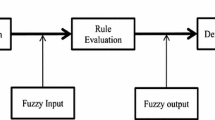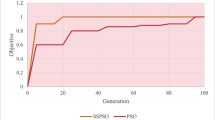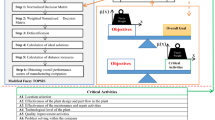Abstract
Based on long-term industrial practice, our research team addressed economic view to complement the existing CIM system architecture, which is used to measure the relevant performance and has become the annex C of ISO 15704. However the work on economic view issued before mainly focused on the performance framework, in this paper a fuzzy performance modeling process and method is proposed as the further research. Considering the numerous dynamic and subjective indicators of performance, the related fuzzy method that the research largely relies on here is the best choice for its natural advantages in this area. Before the method for fuzzy performance modeling is put forward, the fuzzy performance modeling framework aligned with process and organization model is discussed firstly. Afterwards, a theorem is presented for conflict and redundancy validation of fuzzy rules that is necessary for performance modeling. Finally the fuzzy performance modeling and measurement method are suggested.
Sponsored by China 863 Program, No. 2001AA415340; Sponsored by China National Natural Science Fund, No. 60474060.
Preview
Unable to display preview. Download preview PDF.
Similar content being viewed by others
References
Chen, Y.L., Tseng, M.M.: A Stair-Like CIM System Architecture. IEEE Trans. on CPMT Part C, 101–110 (1997)
Folan, P., Browne, J.: A review of performance measurement: Towards performance management. Computers in Industry 56, 663–680 (2005)
Leng, G., McGinnity, T.M., Prasad, G.: An approach for on-line extraction of fuzzy rules using a self-organising fuzzy neural network. Fuzzy Sets and Systems 150, 211–243 (2005)
Kaplan, R., Norton, D.: The balanced scorecard-measures that drive performance. Harvard Business Review 70(1), 71–79 (1992)
Kaplan, R., Norton, D.: Putting the balanced scorecard to work. Harvard Business Review 71(5), 134–147 (1993)
Larsen, H.L., Yager, R.R.: Query Fuzzification for Internet Information retrieval. In: Dubois, D., Prade, H., Yager, R.R. (eds.) Fuzzy Set methods in Information Engineering: A Guided Tour of Applications, pp. 291–310. John Wiley & Sons, Chichester (1997)
Lekova, A., Mikhailov, L., Boyadjiev, D., Nabout, A.: Redundant fuzzy rules exclusion by genetic algorithms. Fuzzy Sets and Systems 100, 235–243 (1998)
Neely, A.: Business Performance Measurement: Theory and Practice. Cambridge University Press, Cambridge (2002)
Kueng, P.: Process performance measurement system: a tool to support process-based organizations. Total Quality Management 11(1), 67–85 (2000)
Saaty, T.L.: Creative Thinking, Problem Solving & Decision Making. RWS Publications, 4922 Ellsworth Avenue, Pittsburgh, PA 15213 (2001)
Wang, Q.: Study on the enterprise performance modeling method supporting the research of economic view. PH.D. Dissertation, Tsinghua University, P.R.China (2006)
Zadeh, L.A.: Fuzzy sets as a basis for a theory of possibility. Fuzzy Sets and Systems, 159–179 (2004)
Author information
Authors and Affiliations
Editor information
Editors and Affiliations
Rights and permissions
Copyright information
© 2006 Springer-Verlag Berlin Heidelberg
About this paper
Cite this paper
Zhou, J., Li, Q., Xu, D., Xiao, T. (2006). Fuzzy Performance Modeling Aligned with Process and Organization Model of Integrated System in Manufacturing. In: Wang, L., Jiao, L., Shi, G., Li, X., Liu, J. (eds) Fuzzy Systems and Knowledge Discovery. FSKD 2006. Lecture Notes in Computer Science(), vol 4223. Springer, Berlin, Heidelberg. https://doi.org/10.1007/11881599_124
Download citation
DOI: https://doi.org/10.1007/11881599_124
Publisher Name: Springer, Berlin, Heidelberg
Print ISBN: 978-3-540-45916-3
Online ISBN: 978-3-540-45917-0
eBook Packages: Computer ScienceComputer Science (R0)




